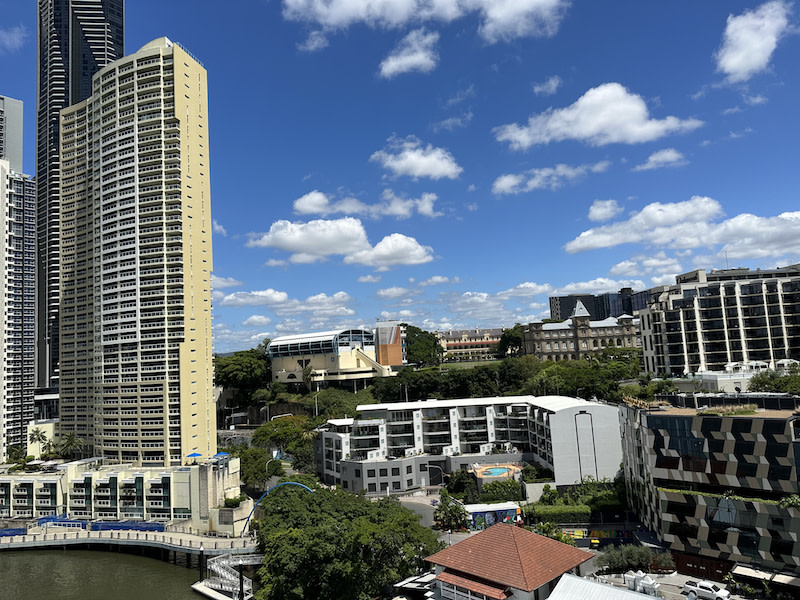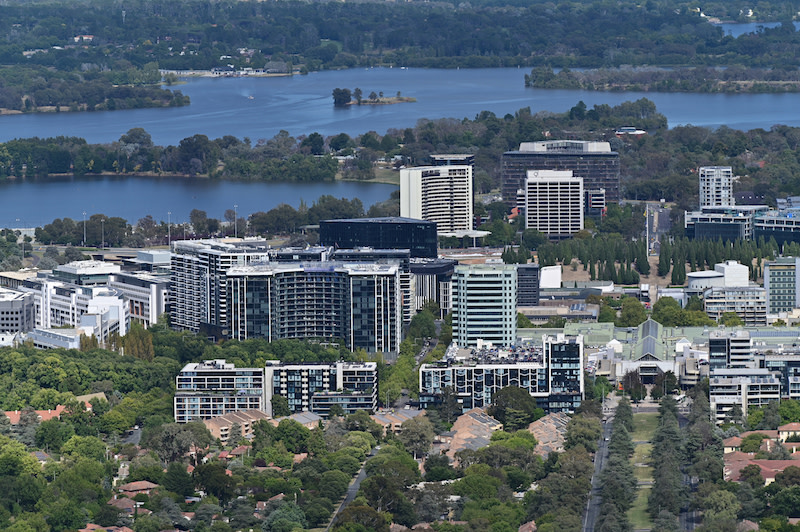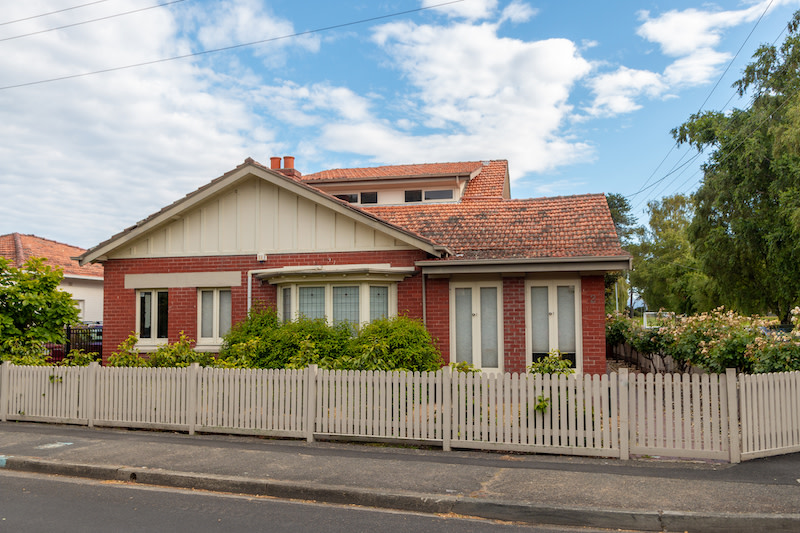
NOMINATIONS CLOSE SEPTEMBER 12 RECOGNISING THE INDIVIDUALS BEHIND THE PROJECTS
NOMINATIONS CLOSING SEPTEMBER 12 URBAN LEADER AWARDS
Resources
Newsletter
Stay up to date and with the latest news, projects, deals and features.
Subscribe
Property prices will soften this year after bounce back of 2023 as the factors that supported price growth evaporate.
Property industry analyst and economic forecaster Oxford Economics Australia said that the market had last year recouped the losses of 2022, with Australia’s median home price hitting an estimated new record of $939,000 in December, 2023.
However, according to the company’s Residential Property Prospects report, which forecasts property prices and the rental market to 2026, housing sector looks to be at an inflection point moving into 2024.
“The positive factors supporting price growth in 2023 have started to fade,” the report said.
“Auction clearance rates have softened from 70 per cent to near 60 per cent, while monthly price growth has moderated, with some capital cities recording negative quarterly results.”
Maree Kilroy, report author and senior economist with Oxford Economics Australia, said capital city performances had diverged in recent months.
“Total listings have risen in Melbourne and Sydney, a trend we expect will continue in coming quarters, acting to slow price growth.
“Tailwinds will serve to propel prices in Perth, Brisbane, and Adelaide. Low levels of advertised listings and affordability in pockets will prop up prices in these cities next year.
“Interest rate cuts from late 2024 should boost credit availability, accelerating broad price growth once again.”
Affordability has deteriorated significantly during the past two years, according to the report.

This will play a key role in containing the pace of growth, especially for houses. However, a significant home stock deficiency is geared to persist across all of Australia's major population centres, placing a floor under prices.
The company forecasts muted home price growth of 2.7 per cent nationally in 2024, with the median all-home price forecast to grow an average of 6.3 per cent pa over the two years to the 2026 financial year.
Apartments will outpace houses, lifting 7.6 per cent versus 6 per cent pa respectively.
Meanwhile, record-breaking overseas migration flows have exacerbated an already tight rental market, with the national vacancy rate holding at an extreme low of 1 per cent.
Total home rents are estimated to have ended 2023 up 14.3 per cent, with growth heavily skewed towards units (up 18.3 per cent).
Quarterly growth has eased from its extremes but should nonetheless remain elevated near term.
House and unit rents are forecast to grow by 4.1 per cent and 5.8 per cent respectively in 2024.
“Rental affordability has deteriorated over the past two years,” Kilroy said.
“This is especially evident in Sydney and Adelaide, which is forcing larger rental households to be formed.”

The ability to add rental supply to the market remains limited as capacity constraints hold back the delivery of new housing.
The eventual flow through of completions over 2024 is expected to add somewhat to rental supply—but more importantly, it will reduce demand pressure as some households transition into owner-occupation.
“The Perth rental market is expected to outperform over the forecast horizon, driven by nation-leading population growth and a relative affordability advantage”, said Kilroy.
However, the ability of households to absorb higher rents is topping out.
With this, rental growth is projected to recede to an average of 2.6 per cent over the two years to June 2026—a rate not too far removed from consumer inflation.
Gross rental yields have lifted and so too have investor loans, the report found.
Looking ahead, the return of interest rate cuts from late 2024 will ease leveraged property outgoings; however, state and federal governments have moved to increase charges on residential property investors, both domestic and foreign.
State governments are targeting holiday rentals as a source of supply for the long-term rental market. Multiple states have announced, or are in the process of actioningm policy in this space.
Outside of specific holiday postcodes, the upside for rental supply is likely small.

Increasing an estimated 10.3 per cent over 2023, Sydney’s median house price is estimated to have exceeded its previous peak in the December quarter 2023, reaching $1.6 million.
However, the pace of growth is slowing; a function of an additional interest rate lift in November and rising total listing volumes.
Fading demand stamina is showing through in softening auction clearance rates.
Oxford Economics Australia expects this trend to continue through early 2024, resulting in house price growth of only 3.3 per cent and 5.2 per cent for units in the 2024 financial year.
“With the context of a growing home stock deficiency, the return of interest rate cuts will drive the next acceleration of price growth from late-2024 onwards,” said Kilroy.
Housing affordability remains a major concern for Sydney.
Oxford Economics Australia expects the relatively cheaper price point of units to help back stronger growth near term. Sydney’s median house and unit price are forecast to increase 5.9 per cent and 8.3 per cent p.a. respectively over the two years to June 2026.
Investors play a key role in the Sydney market.
The Federal government announced increased taxes for foreign purchases late last year. It raised the withholding tax rate applied to the sale of a property by a foreign vendor to 15 per cent (previously 12.5 per cent), tripled the foreign investment fee for purchases of established homes, and doubled the vacancy fee for homes owned by overseas investors.
Oxford Economics Australia expects the impact of these changes to be modest and limited to specific postcodes concentrated in Sydney.

“Rising total listings have provided greater options for buyers in Melbourne, reducing urgency to purchase, in turn leading to easing conditions,” said Kilroy.
“Slower growth in the upper quartile has become increasingly evident, hinting that, as affordability worsens, demand is being deflected from the more expensive price bracket to the middle of the market.”
Oxford Economics Australia expects the median all-home price to hold flat over the 2024 financial year.
Maree Kilroy, report author and Senior Economist at Oxford Economics Australia. Auction clearance rates are trending downward, while growth in investor lending for Victoria is the weakest of the mainland states. Simultaneously, investors have become more active on the sell side.
Sentiment is being weighed down by policy headwinds.
The Victorian government announced a slew of policy changes that impact property investors. These include expanding the Vacant Residential Land Tax, adding an extra 1 per cent tax on residential land left undeveloped for more than five years in established areas of Melbourne, and reducing the tax-free threshold for land tax payments from $300,000 to $50,000, which took effect on January 1.
The resurgence in migration inflows will be a key support to housing demand in the recovery from 2025 onwards.
In addition to the sharp rebound in overseas arrivals, Melbourne’s net interstate migration has returned to an almost balanced position.
Over the two years to June 2026, both the median house and unit price are forecast to increase 5.5 per cent and 6.5 per cent pa respectively.
By this point, Melbourne’s median house price will reach $1.16 million.

Since bottoming out in the December quarter of 2022, Brisbane became one of the strongest markets through 2023.
Advertised stock levels are running more than 30 per cent below average, while the volume of home sales is trending almost 5 per cent above average levels.
“The Brisbane market continues to benefit from relative affordability compared to the southern capitals, alongside strong future employment prospects, demand fuelled by interstate and overseas migration, and a scarcity of new dwelling supply,” said Kilroy.
The median house price is forecast to lift 5.9 per cent in FY2024—the third strongest increase behind Perth and Adelaide.
Units (up 8.2 per cent) are forecast to grow ahead of houses, gradually closing the price gap that has emerged in recent years.
The return of interest rate cuts from late-2024 should facilitate even stronger price growth over the two years to 2026.
Demand fundamentals are expected to remain strong, with Queensland positioned at the front of the pack in terms of population growth.
The soft near-term supply outlook means pressure on the housing stock is set to endure, setting a strong platform for further growth once the current monetary policy tightening cycle reverses.
Adding to this, the 2032 Olympics should provide a sustained boost to developer and buyer optimism from mid-decade.
The doubling of the First Home Buyer Grant to $30,000 for new homes introduced on November 20, 2023 and ending on June 30, 2025 will divert some demand away from the lower-end established market but will likely have a minimal impact on the median price.

Adelaide’s property market has proven resilient. South Australia continues to record historically strong population growth, running at a record rate of 1.7 per cent in 2023 as the state’s net overseas migration inflow trends upwards.
“In recent years, population gains in Adelaide have been driven by the return of expats among increased interstate inflows,” said Kilroy.
“Having higher purchasing power on average, they have been a key factor in propping up prices and driving momentum in the market.”
Despite recent vigour, Adelaide has maintained its affordability advantage over the East Coast, while a tight rental market is likely also incentivising more owner-occupation activity amid an ongoing rental crisis.
Listings have trended downwards since August 2023, which has combined with solid demand fundamentals to drive strong growth.
The median all-home price is forecast to rise an average 5.8 per cent pa over the three years to 2026, reaching $804,000.

Perth is Australia’s top performing capital city for price growth.
Having bucked the national downturn, property prices have approached double digit-growth. With the lowest median house price of all the major capital cities, the Western capital has been able to maintain a considerable affordability advantage over its peers.
Near term, fundamentals are geared to remain positive.
Western Australia continues to record nation-leading population growth (+3.1 per cent for 2023), while the state’s unemployment rate remains low.
Acute capacity constraints persist, driving delays in new home completions which, alongside construction cost blowouts and strong rental growth, are pushing owner-occupier demand towards the established home stock.
Total advertised listings have trended lower over 2023 alongside above average purchasing activity. These factors combine to place upward pressure on prices.
Momentum is set to be sustained near term. Perth is well equipped to lead the pack over the forecast period as the city develops a more sizeable home stock deficiency.
The median house price is forecast to grow by more than 10 per cent in 2024, slowing to a still solid 9.8 per cent in 2025.
Prices are projected to eclipse those in Adelaide by mid-2025.
A similar profile is expected to play out for unit price growth over the same period.
Both home types are forecast to outpace the other capital cities, rising by more than 9.7 per cent pa. over the next three years.
Risk is to the upside, with it noted that the Perth property market has shown a propensity for significant swings in price cycles.

The Canberra median house price ended 2023 down 6.4 per cent to $968,000, reflecting one of the deeper price slides nationally.
New listings are running above prior years, which is limiting competition for the stock on market and seeing Canberra avoid the rebound seen in other cities.
Further impacting is additional student accommodation coming online, while home completions surged 15 per cent in FY2023.
Oxford Economics Australia expects house and unit prices will hold relatively flat in FY2024.
Canberra is set to remain the second-most affordable market to purchase in Australia.
Support is coming from above average wages in the public sector, which rose 3.5 per cent over the year to September 2023 as a series of new enterprise bargaining agreements kicked in – the fastest rate of growth since June, 2011.
Once interest rate cuts begin in late-2024, the lower levels of household financial stress will provide support alongside the continued return of international students.
Unit prices are set to continue outpacing houses, averaging 6.3 per cent p.a. compared to 5.9 per cent p.a. for houses, which will once again exceed the median $1-million mark in 2025.

Marginal declines are anticipated for median house and unit prices over the 2024 financial year, falling 1.4 per cent and 3.2 per cent year-on-year respectively.
Poor affordability, combined with the slowest rate of population growth in the nation are driving a tamer demand profile and seeing Hobart diverge from the rest of Australia’s capital cities.
Hobart’s net interstate migration outflow has become more sizeable, reflecting the reset of migration patterns beyond the pandemic (both from young adults and lifestyle).
Interest rate falls from late 2024 and a strong pipeline of public investment are expected to spur price growth from FY2025 onwards.

Darwin was the worst-performing market in the 2023 financial year.
The median house price fell 8.9 per cent to $536,000 and units by 5.9 per cent to $376,000.
This weakness is despite being Australia’s most affordable capital city and exhibiting by far the highest gross rental yields across the capital cities.
Patchiness is showing through in quarterly price volatility as momentum fails to build. Off a period of sustained weakness, population inflows continue to show trend improvement, increasing 0.9 per cent in the 2023 financial year.
Although the outlook for mining investment is not as promising as pre-Covid, government investment, particularly in defence, will continue to drive employment growth, and we expect the labour market to perform relatively well over in coming years.
Initially, modest growth in houses is expected during the 2024 financial year (+3.3 per cent), before picking up significant pace in the 2025 financial year (+7 per cent) and the 2026 financial year (+8.2 per cent).
This will take the median price tp a new record level of $641,000.
Units are forecast to perform similarly, growing at around 8 per cent pa over the three years to June, 2026.